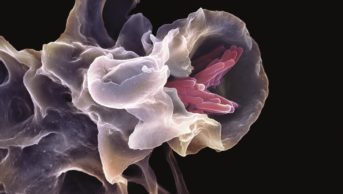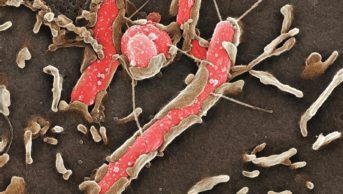Scientists are warning that current whooping cough vaccines may not be able to control the disease in future.
The warning follows their analysis of isolates from the 2012 UK outbreak of whooping cough in which there were nearly 10,000 laboratory-confirmed cases.
The resurgence of the disease has primarily been linked to switching from the use of whole cell (WCV) to acellular (ACV) pertussis vaccines.
The researchers analysed the genes coding for proteins on the surface of the pertussis bacterium responsible for the 2012 outbreak. They found that the proteins being targeted by the vaccine were mutating at a faster rate than other proteins on the surface of the bacterium.
“This was true even prior to the introduction of pertussis vaccines, but has become even more pronounced since the current acellular vaccines,” they write in the Journal of Infectious Diseases[1]
.
For the first time their analysis shows that many genetically distinct Bordetella pertussis strains contributed to the 2012 outbreak.
“Importantly this was not due to the emergence of a novel, hypervirulent clone or expansion of an individual lineage,” they say. “Furthermore, outbreak strains were genetically very similar to those circulating during periods when the incidence of pertussis was low.”
The researchers say that the “rapid evolution” at the protein level of ACV proteins compared with other cell surface proteins suggests that strains of the disease will become “increasingly mismatched” to those used for vaccine production.
“Our results raise fresh concerns over the ability of current acellular pertussis vaccines to continue to control disease,” they say.


